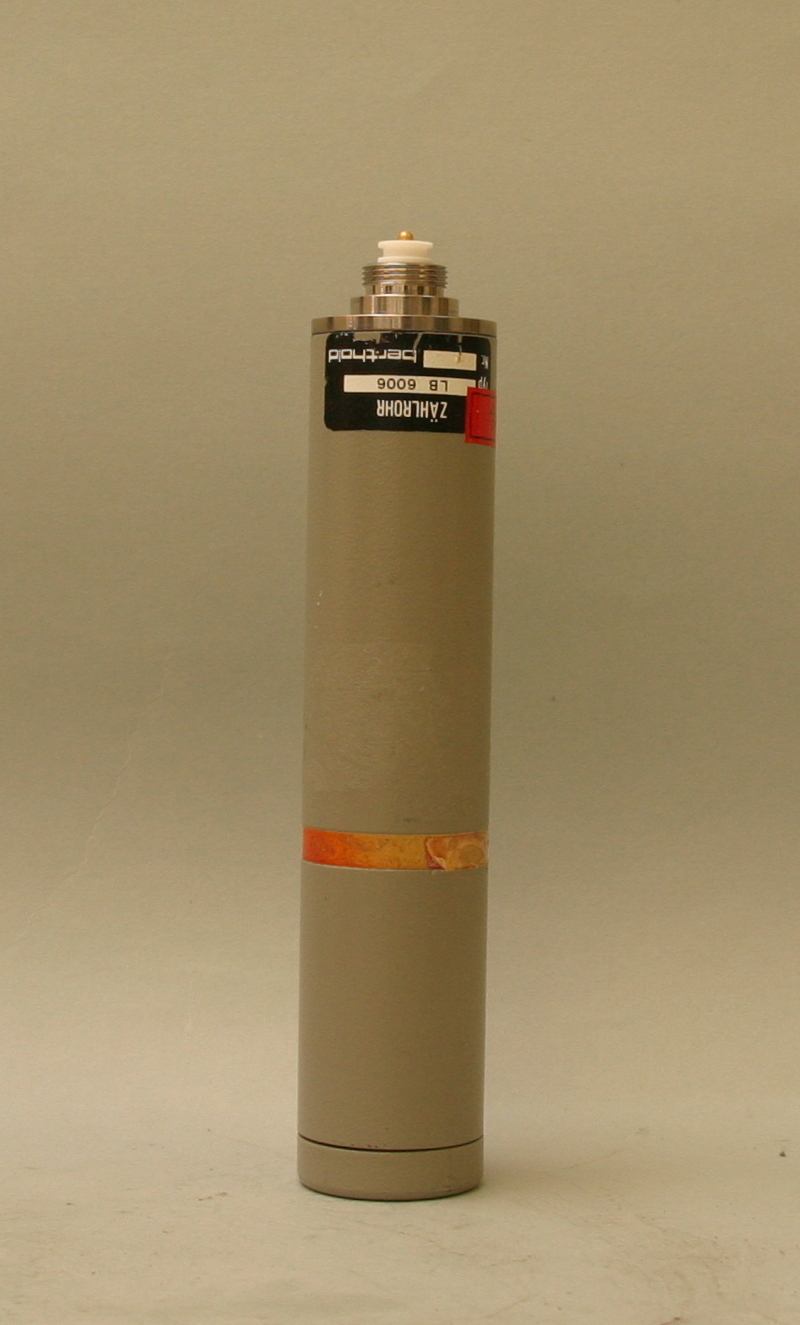Direct Read Pocket Dosimeters are portable dosimeters which can provide the wearer with a real-time reading of x-ray or gamma ray exposure. A Direct Read Pocket Dosimeter looks similar to a marker pen so it is easy to carry around. A small ionization chamber with dimensions approximately several milliliters is inside the dosimeter. The central wire anode in the ionization chamber is attached to a metal coated quartz fibre. A charger applies a DC voltage to charge the anode with positive electrostatic charges. The charges are distributed across the anode and the fibre so that an electrostatic repulsion deflects the fibre away from the anode. When ionization of air occurs due to radiation in the active volume of the chamber, electrons will be collected by the positively charged anode. The net positive charge in the anode is reduced by the collection of electrons and the repulsion between the anode and the fibre will be weaker. The fibre is able to move back toward the anode and eventually go back to the original position when the anode is neutralized. Radiation dose can be calculated by the movement of the fibre, as it is directly proportional to the amount of ionization in the chamber.
The principal advantages of Direct Read Pocket Dosimeters are: 1) it can provide an immediate dose reading to the wearer and 2) it is reusable. However, it suffers from low accuracy due to the analog design. The dynamic range is small because of the limited amount of charge stored in the electrode. Physical impact and imperfect insulation cause charge loss, affecting the accuracy of reading. Though the dosimeter itself does not require power to operate, the charger is battery powered. Nowadays, Direct Read Pocket Dosimeters are nearly all superseded by Digital Electronic Dosimeters.
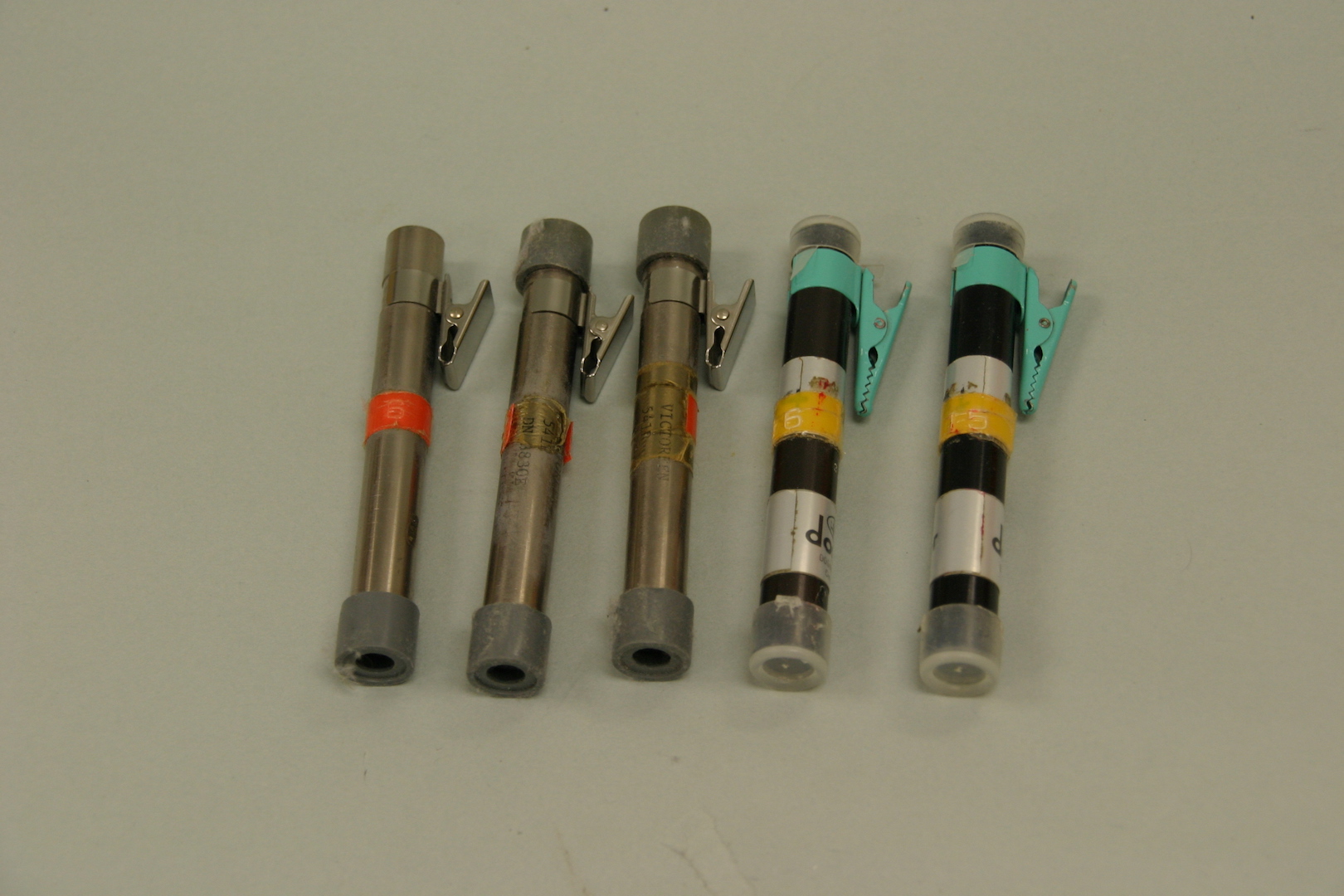
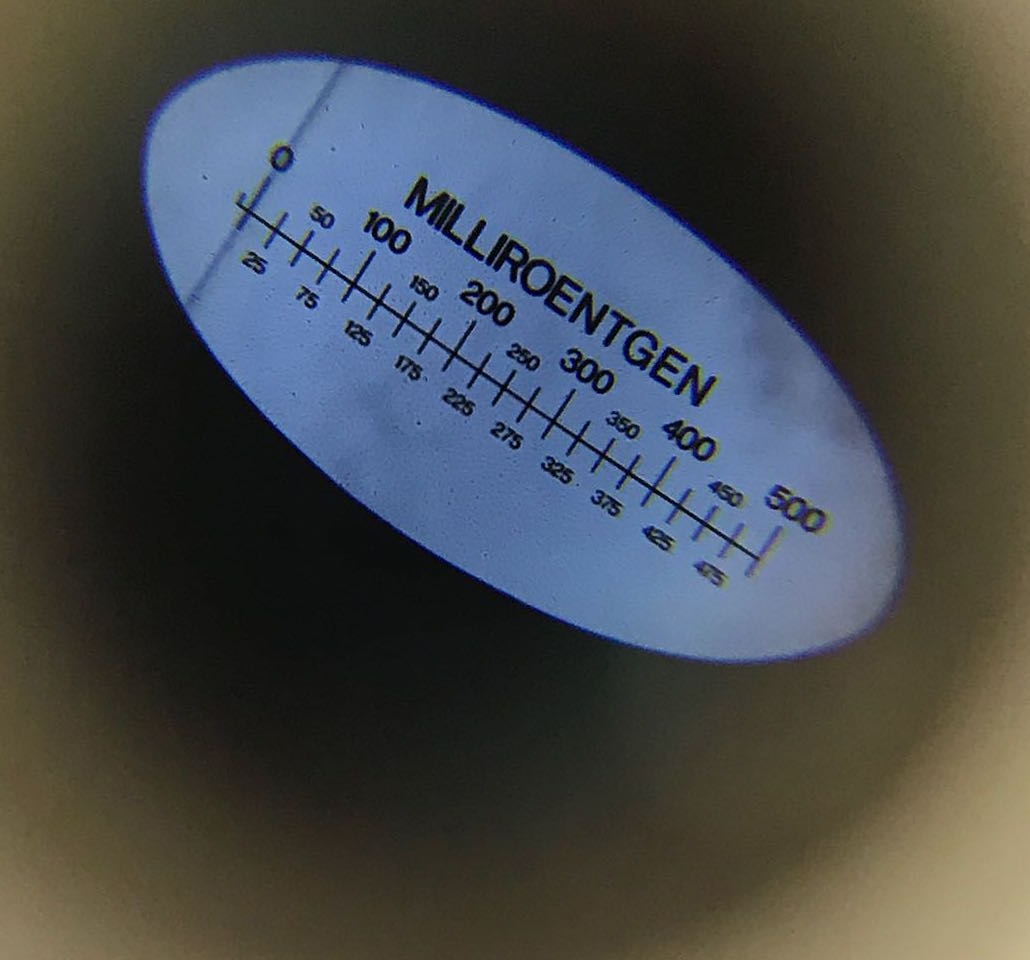

The battery power Digital Electronic Dosimeter is slightly larger and heavier than a Direct Read Pocket Dosimeter. These electronic dosimeters are able to provide real-time accumulative dose and dose rate information. The electronic dosimeter often utilizes Geiger-Müller (GM) counter to measure radiation. The output charges from the GM counter are stored until a predetermined amount is reached and then discharged to trigger an electronic counter. The accumulative dose and dose rate can be calculated from the output of the electronic counter and shown to the wearer on the display panel real-time. Buzzers are installed in most Digital Electronic Dosimeters so audible alarm signals will be emitted when radiation is detected. Some dosimeters can be set to emit a different format of alarm if a preset exposure limit is reached, reminding the wearer to take necessary precautions.
The GM counter and the digital electronic components are robust so Digital Electronic Dosimeters do not have a limited range of detection and will not be disrupted easily as long as the battery is providing power. Also the digital number display provides clear and easy-to-read dose information to the wearer and the audible alarm keep alert the wearer to be mindful to any potential radiation hazard.


Film Badge is a type of widely used personal dosimeter. It consists of a small photographic film and a plastic film holder. When radiation hit the film emulsion, it causes a darkening of the film. The amount of darkening increases with the absorbed dose to the film emulsion and can be measured by a densitometer. The film is coated with different size of silver bromide grain on both sides. The side with large grain, fast emulsion is sensitive to low level exposure and the other side is coated with fine grain, slow emulsion is less sensitive to radiation exposure which can be used in high level exposure. The film is placed in a light-proof and water vapour-proof holder. Different metal filters are inserted between the film and the holder at different locations. Incident radiation will be attenuated to a different extent by the filters and caused different magnitude of darkening on the film. The dose and the energy of the radiation can be calculated by comparing the darkening of film under different filters. Some film badge contains a window on the holder which allows the exposure of the film to beta particles.
The advantage of the film badge is that it is able to distinguish between different energies of gamma/x-ray and measure the dose due to different types of radiation. Besides, the record can last for a long time and it is accurate enough for radiation safety application. In addition, it does not require power to operate and is inexpensive. However, Film Badge cannot provide a real-time dose reading, as it must be processed to calculate the cumulative dose of the wearer, and is unable to provide active alerts to the wearer.
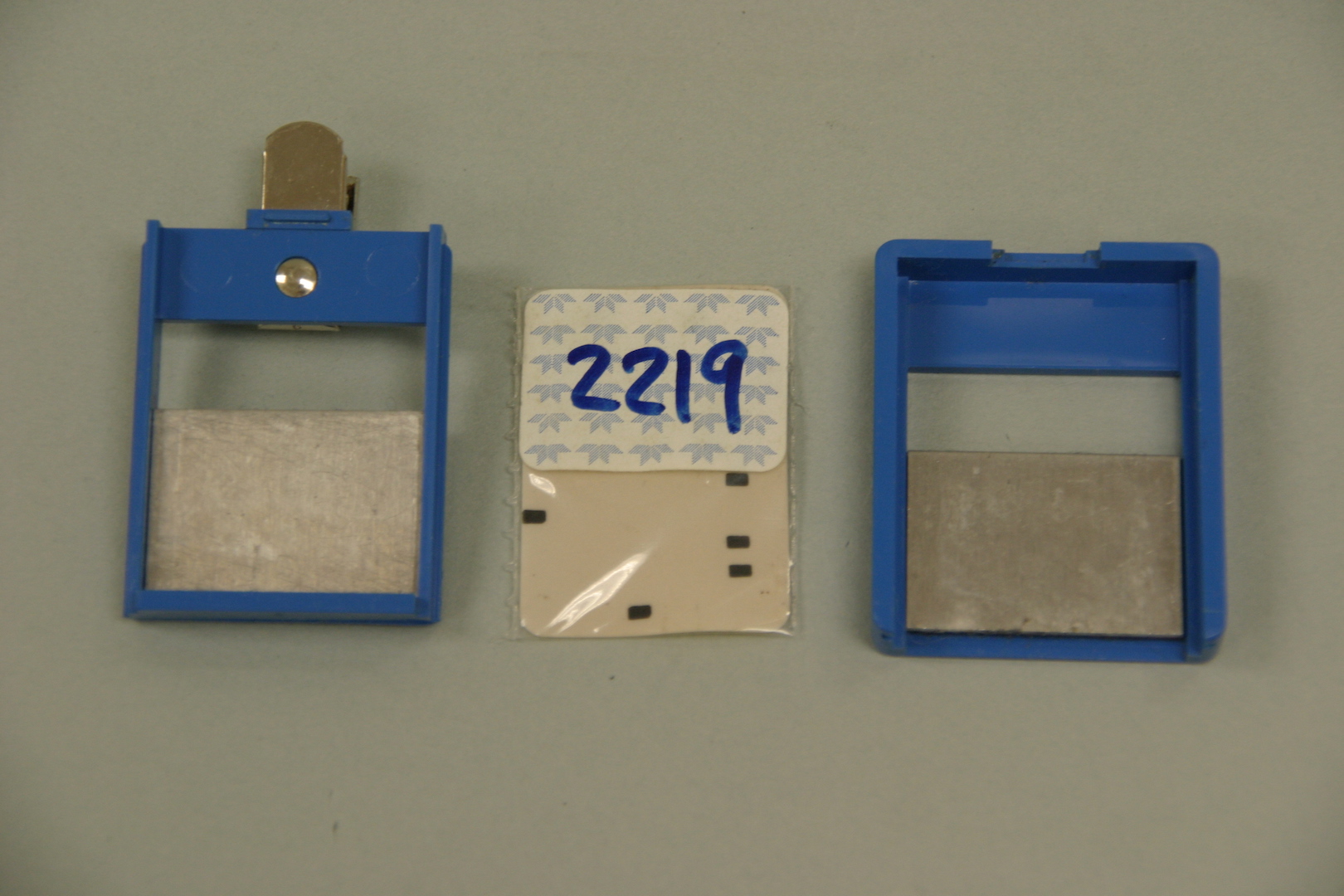

Thermoluminescent dosimeters (TLD) are another type of commonly used personal dosimeters. A TLD consists of a thin plastic badge with small pieces of solid crystal, like lithium fluoride or calcium fluroide. When atoms in the crystal are ionized by incident radiation, electrons will be trapped in the lattice because of impurity in the crystal. These electrons will drop back to the ground state when the crystal is heated and photons will be emitted during de-excitation. Released photons are counted by photomultiplier tubes and the number of photons is proportional to the magnitude of radiation exposure. Filters can be added in the TLD to allow energy determination.
The advantages of TLD are its linearity of response to dose sensitive to low doses and it is reusable. Similar to Film Badge, the TLD cannot provide real-time readout and lack of active alert to the wearer.
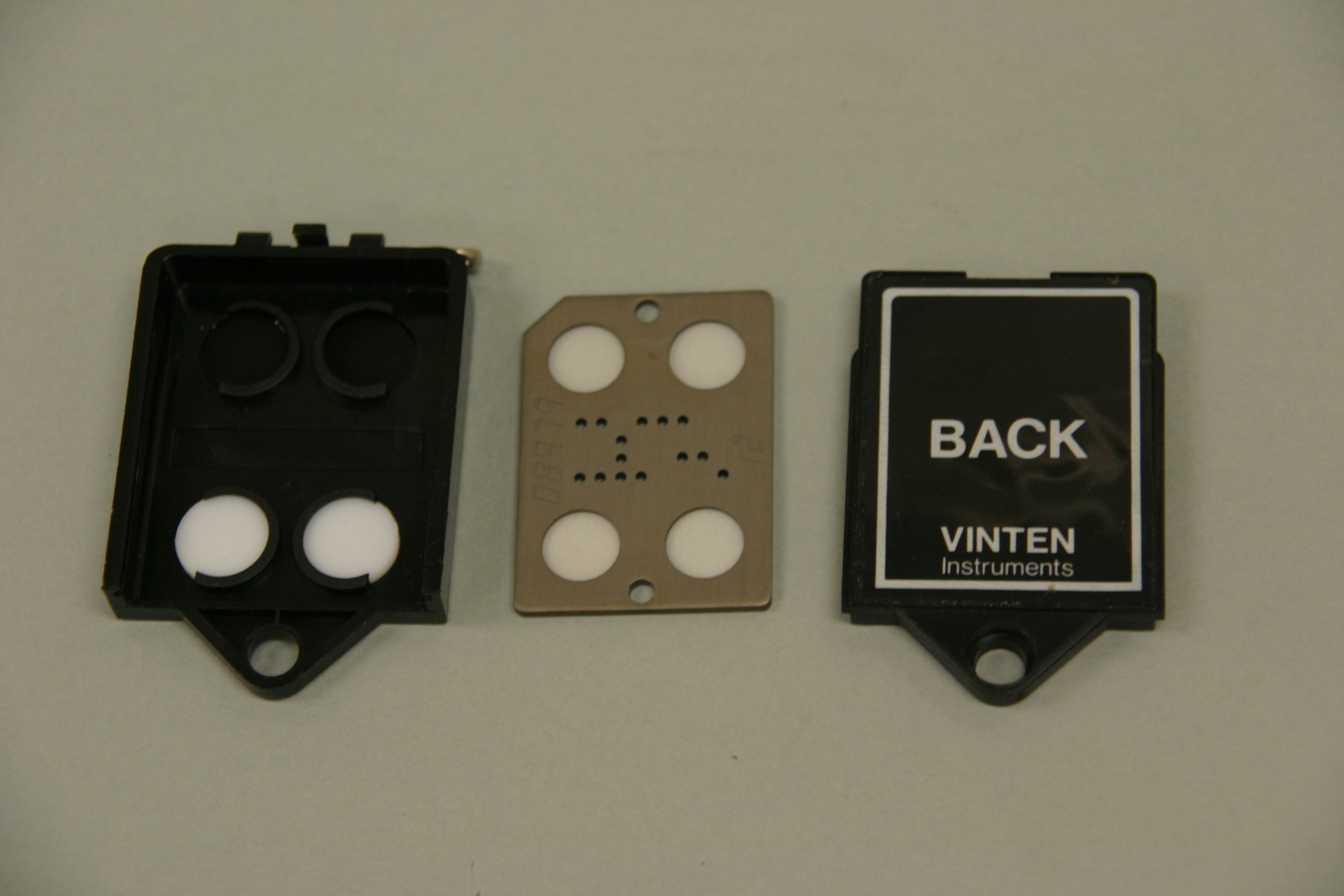
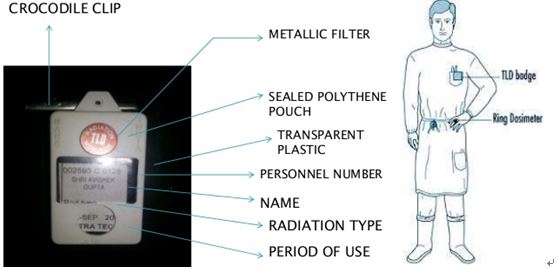
A dosimeter charger is used to reset the reading of a Direct Read Pocket Dosimeter to zero after exposure. When the electrode of the dosimeter is inserted into the charging contact on the charger, the pin contacts the electrometer frame and electrifies the anode of the dosimeter. The zeroing can be adjusted by the scale on the charger precisely. In some model, a light bulb is installed under the charging contact. When a dosimeter is just inserted but not pressed down firmly, the light bulb turns on but the dosimeter will not be charged, helping the user to read the number inside the dosimeter through the lens.

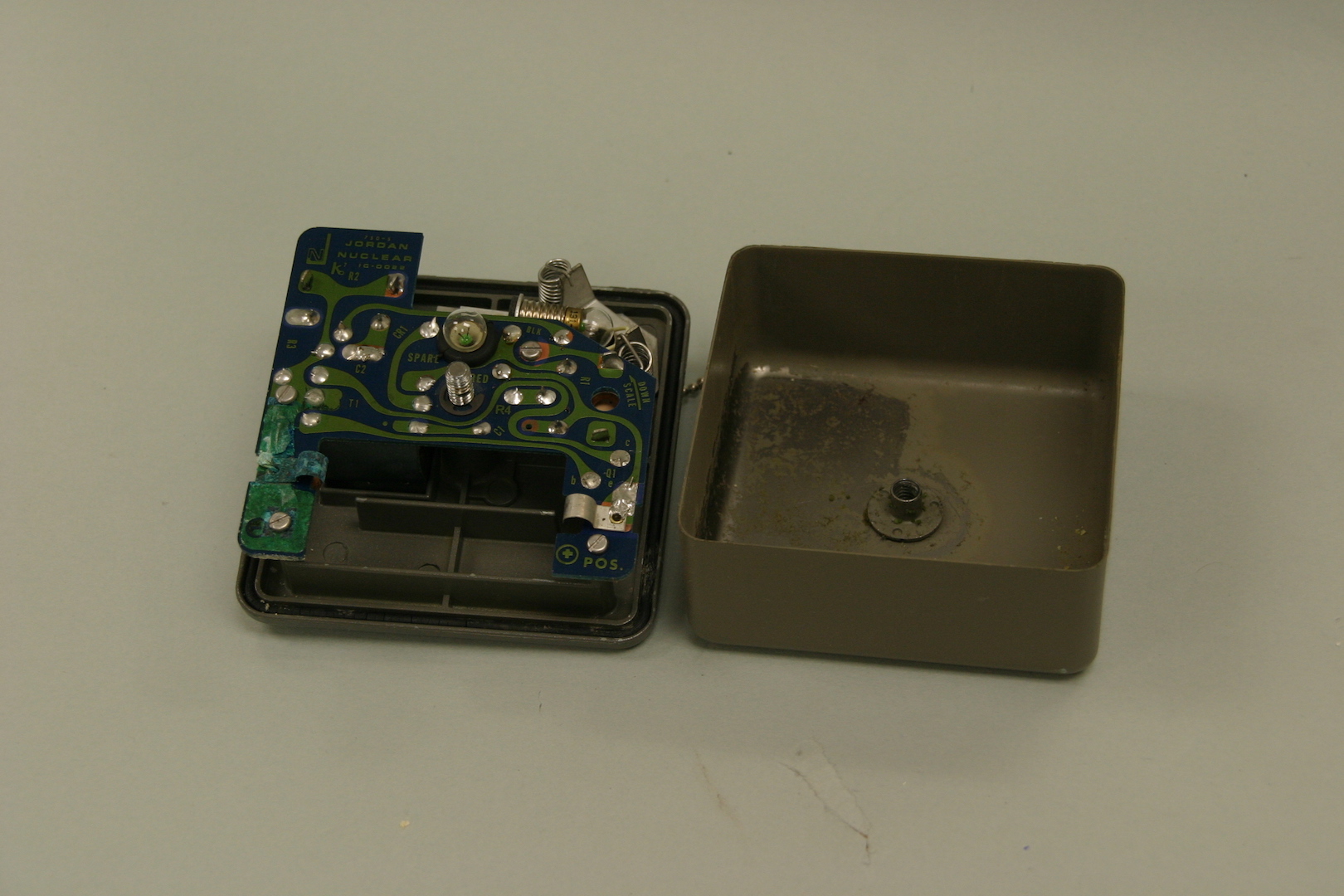
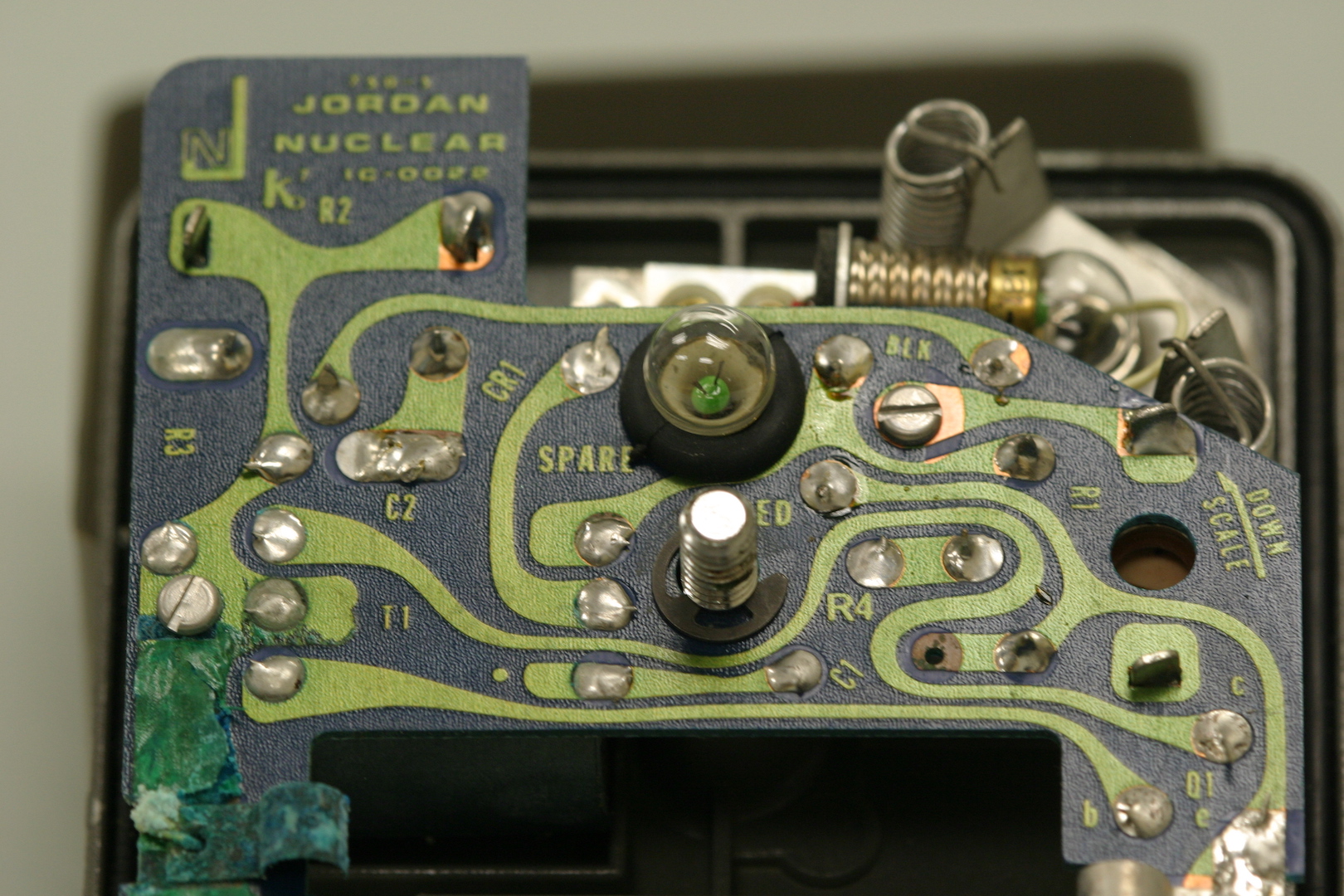
A video camera tube (vidicon) is a device used to capture images and convert to electronic signals before the introduction of charge-couples devices. When light rays hit a point upon the photoconductive target, the electrical resistance of that particular point will be reduced and the reduction is proportional to the intensity of light. The target is swept by a low-velocity electron beam, the amount of current that crosses the target and reaches the signal plate depends on the resistance of the target at each location, which in turn is related to the local light intensity. Thus the electrical signal is modulated by the local variations in light intensity and can be used to reproduce the image.
The below vidicon is a Plumbicon, a trademark of Philips for its unique vidicon. It utilizes lead(II) oxide (PbO) for the photosensitive target instead of the more usual Sb2S3 in other vidicons.
Proportional counter tube is a type of gas-filled ionization detector. The tube is filled with quench gas, usually P-10, and an immediate voltage is applied across the electrodes to ensure there will be only one Townsend avalanche in each ionization event. The magnitude of ion current is proportional to the number of ionization events. Not only radiation dose can be calculated accurately by the current signals, but also the energy of the incident photon can be determined. This proportionality makes proportional counters useful for spectroscopy.
The proportional counter tube shown is the Berthold LB-6006 energy compensated proportional counter, a part of the LB 126 portable dose rate monitor. It is an energy compensated low-dose counter used in the entire field of photon radiation protection, approved in accordance with the new standard H*10. It has a measuring range of 50 nSv/h to 50 mSv/h; and energy range from30 keV to 1.3 MeV.
